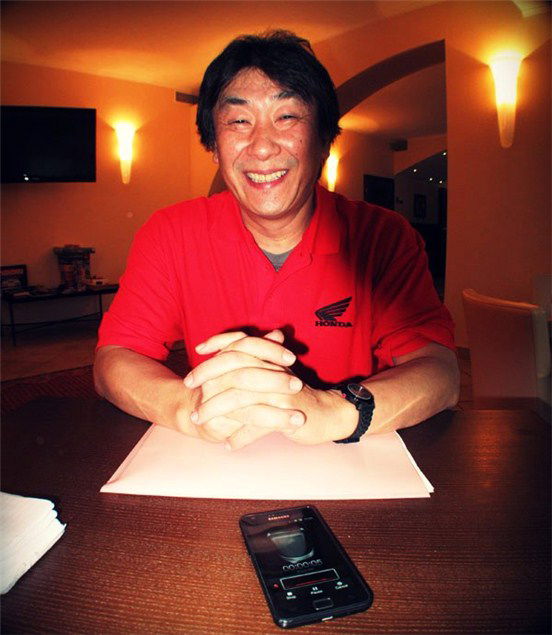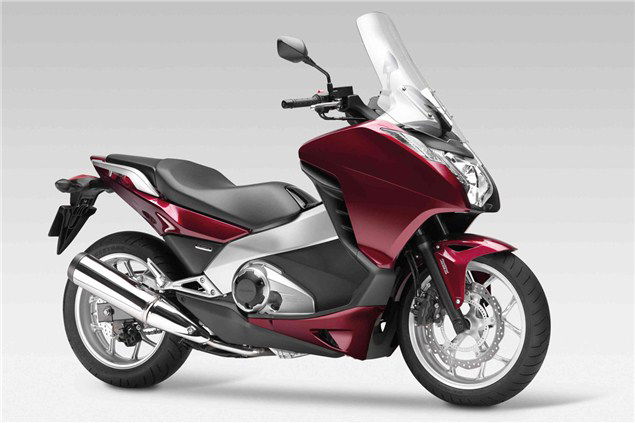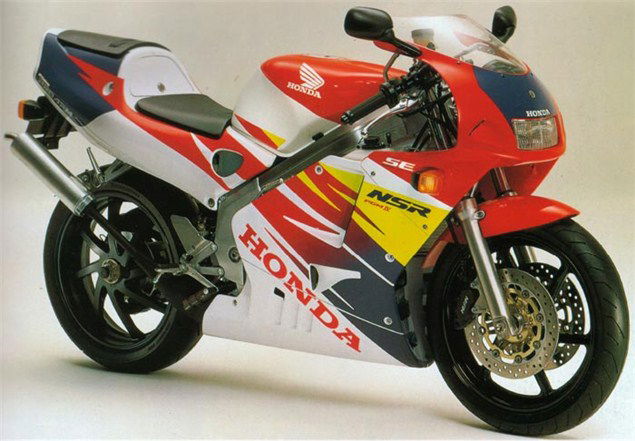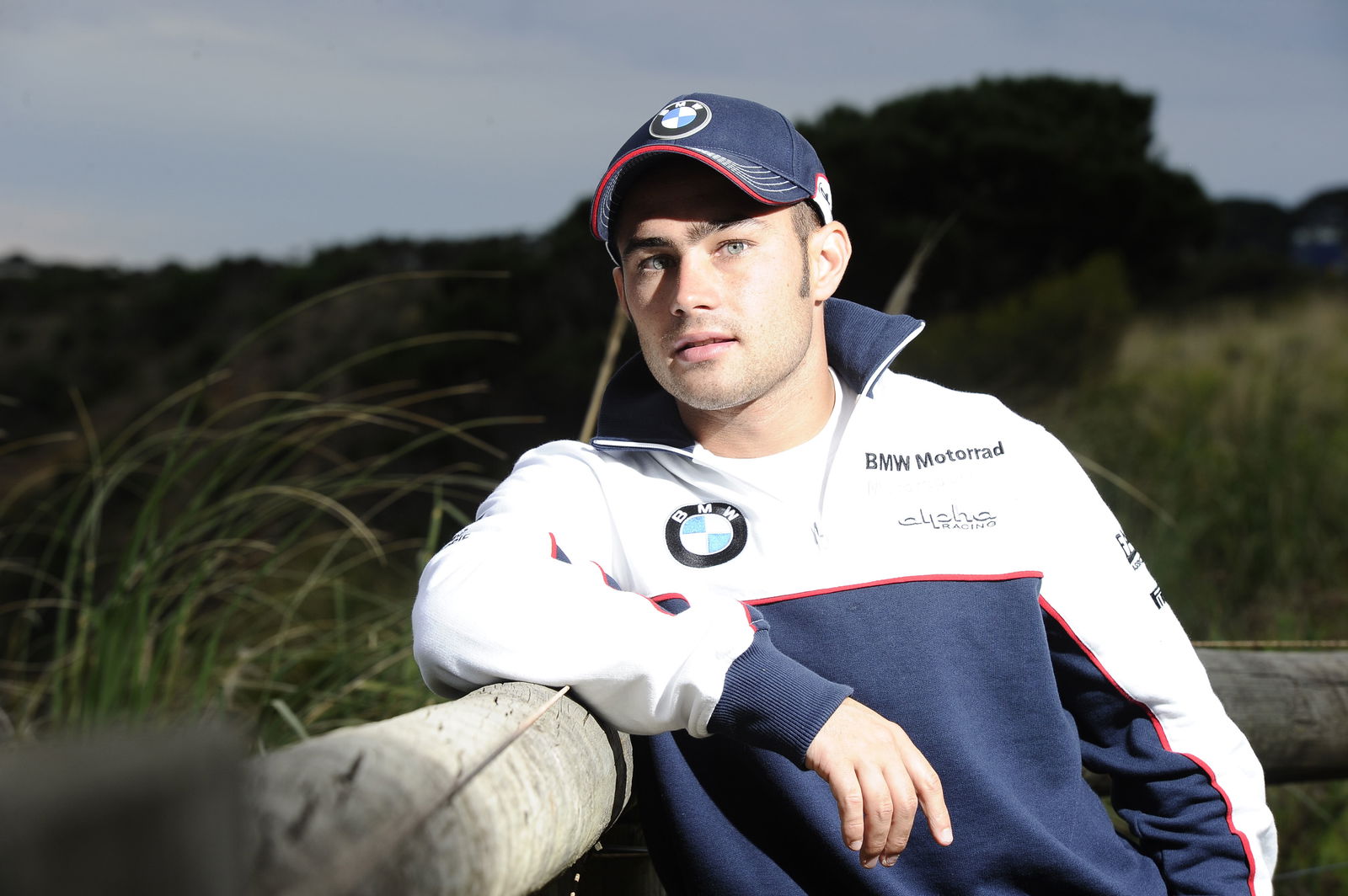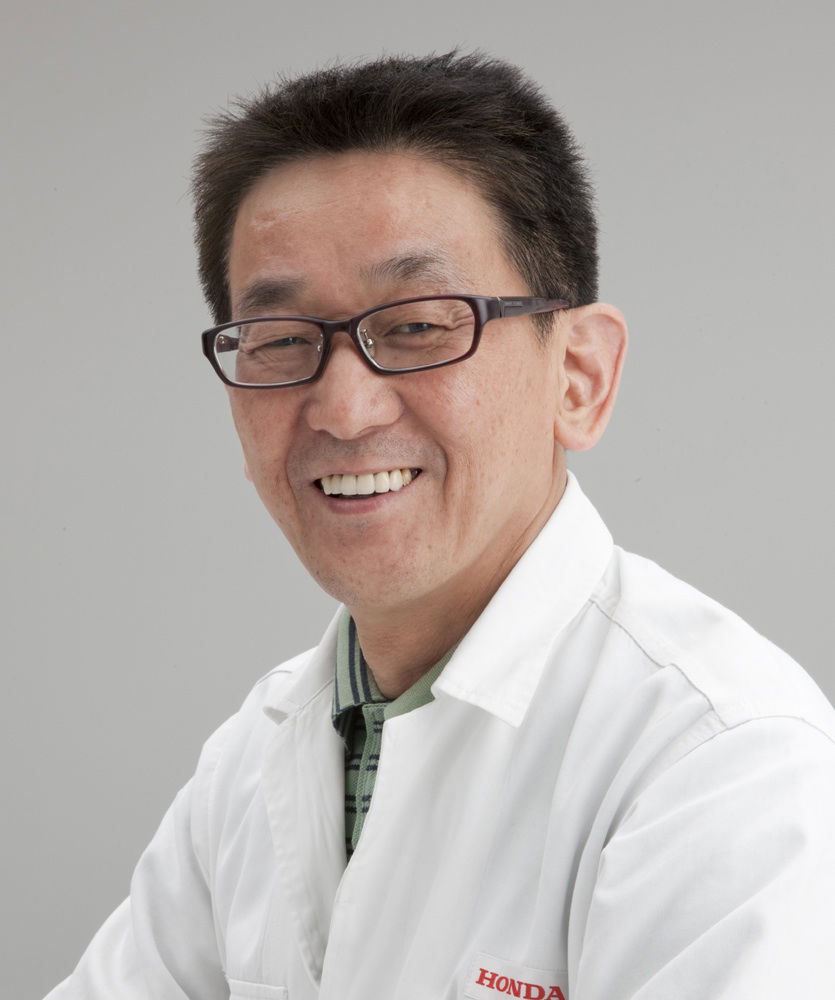Interview with Masanori Aoki, father of the NSR250R MC28
...and 14 other Hondas for that matter. His biggest challenge? The new Integra.

HONDA'S piano-playing, chain-smoking, happy-go-lucky, Aoki-san has been at the heart of some of the firm's most iconic bikes; from the CB250RS, to the NSR250 MC28 and CBR400RR to more recently, the Goldwing 1800. Aoki-san has developed 15 bikes in over 31 years with the company.
Just recently, he faced his biggest challenge; to make a motorcycle that's got all the benefits of a scooter and at the same time a scooter that that's got all the benefits of a motorcycle. I sat down with him to find out more about the new Integra, the direction of Honda and also why a recession is bad news for lovers of 400cc sportsbikes and how a ski-lift lead to the birth of the iconic Smart Card.
What was the biggest challenge with the Integra?
Fuel consumption. We had to find a 40% improvement on fuel consumption compared to a similar sized engine but we also wanted to ensure the engine had 'fun factor' and the two don't usually go hand in hand. We had to look outside of what's normally the focus for development. For example, how do we reduce the losses, in order to make the engine's power go further. We have made lots of small changes that add up to one big improvement.
Aside from the DCT what one feature of the bike makes the biggest difference?
Because the motorcycle is such a combination of different technologies, if you have one thing that stands out then the machine itself isn't balanced, so it's hard to prioritise one thing in the development process. It must balance! You have to develop the bike as a whole. We wanted to get the best from the DCT but also produce an engine that offers better fuel economy than its rivals and also have character. Hard!
So if it didn't run on 17" wheels would it feel like a scooter?
With small wheels the concept wouldn't stack up and we knew from all the bikes we make that it had to use motorcycle wheels to feel and ride like a motorcycle.
The DCT started on the VFR1200 and now it's on a 670, will we see DCT on even smaller bikes?
You could use DCT with any size of engine but whether we do or not is up to the management!
In this new engine, you reduce friction losses by using a resin coating on the pistons, why don't you use this on other bikes like the Fireblade?
The Integra's engine has a long-stroke whereas the engine in the Fireblade has a short stroke and it revs higher. So the consideration here is durability but in the Integra we don't have this problem.
If this engine is so fuel efficient, why would it not be in nearly every model in Honda's range in 3 year's time?
It's all down to your definition of fun: not everyone is interested in fuel economy, some people only want fun. When you're at 11,000 revs on your Fireblade you're not thinking about fuel economy! The thinking behihnd this engine is that fun can have other definitions and we wanted to explore that. If this engine gets well received, it may be that this kind of engine gets used in lots more models. I hope so!
DCT is at one end of the scale in terms of technology. The seamless-shift gearbox in Casey Stoner's MotoGP bike is at another. So when it comes to the Fireblade, which way is it going to go?
We have to ask ourselves, is it possible to make this in large numbers at a good price? The reason the 'mass-producability' of the DCT gearbox is better is the fact it's an add-on to existing engines that work with manual gearboxes so this is the direction it's more likely to go in.
So will Casey's gearbox end up in any bikes in Honda's range?
You could do it but it would be too expensive for anyone to afford it!
Out of all the other manufacturers, who's bike do you admire the most?
My way of life is that if another manufacturer has a bike I admire, my first reaction is to make a better one for Honda! So at the moment there's no bike out there I feel aspiration towards.
You were the Project Leader for the NSR250 MC28. What were the main objectives of that bike and what problems did you have to overcome?
Honda are a 4-stroke company and we didn't have much 2-stroke technology. Yamaha had the TZR and we had to beat it! We started by looking at it and working out how we could make it better. It was difficult to do this without much history to build on, so this was a very difficult challenge with many late nights!
So if it was a tough challenge, why did you make it more complex by developing the Smart Card?
I was on holiday skiing and I went to use the lift, you needed to use a card to get through the barrier. That impressed me and I spent the day thinking how can I use something like this on a Honda. The first idea was to use a card to touch on the bike to start it. Then we thought it could carry different engine maps and this would make updating data really easy but I knew the Honda management wouldn't accept this as a good enough reason. So Smart Card was really approved by the management as development for the immobilisers we used in later bikes. Very smart!
You were also the Project Leader for the CBR400RR. I can't help but think that with today's technology you could make a 150kg, 80bhp, 18,000rpm, 400cc sportsbike to help get more young people interested in riding motorcycles. Surely people at Honda want this too? Why don't we have one?
It goes back to the 'mass-producability' of the machine. If you make this, it would be too expensive for anyone to buy.
Couldn't you use a CBR600RR chassis and develop a 400cc engine?
Yes! People have looked at it and they've been pushing it but when you look at the sums, it doesn't add up and they never get signed off. Never say never!
